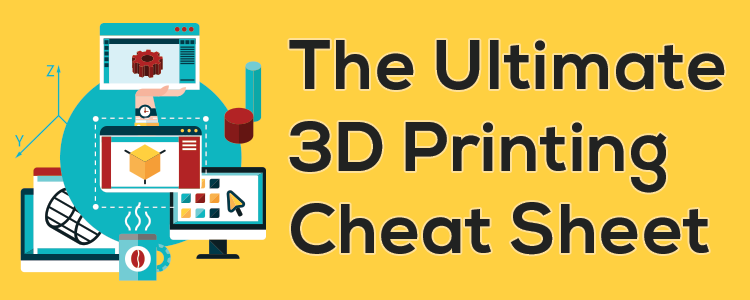People love buffets.
Buffets allow the indecisive to skip and hop around without guilt or committing to just one boring dish.
A quick taste here, a sample there.
It’s a fun time.
Well, ladies and gentlemen, I have compiled such a buffet just for you.
It is a very special kind of buffet, in that, it contains all of the 3D Printing resources you would ever need.
A magnum opus, an ultimate (and evolving) index of everything 3D Printing — hand curated, JUST FOR YOU.
In layman’s terms: It is the Ultimate 3D Printing Cheat Sheet – one you can re-visit over and over again to find exactly what you need.
I have categorized all the major topics into self-contained sections along with a comprehensive list of all of the resources related to that category.
At the end of every section, I summarize the best resource(s) in that particular category for your convenience.
If you are short on time, you can simply skip to the conclusion of each section to find the best resource(s) pertaining to that section.
I will also update this post in the future as new resources become available and old resources die out…
Feel free to jump around in any order.
Ready to rock and roll?

- Thingiverse – Thingiverse is arguably the most established, granddaddy of search engines for 3D Printable objects. It is the 3D Printing equivalent of the Library of Alexandria (Before it was engulfed in flames of course!). One downside to Thingiverse is the enormous amount of noise on the site. The noise might make it difficult to find a specific design, especially if you are just casually browsing for designs. Here’s how to minimize the amount of search time: browse the “3D Printing” category and filter by “Most Makes”, this will give you a leg up on finding quality designs to print! Thingiverse’s user interface is also quite intuitive, so, if you are brand new to Thingiverse, there’s virtually no learning curve. Once you find a design you are satisfied with, be sure to read the comments section of that object, because that’s where all the real insight is hidden! The biggest strength of Thingiverse is the enormous amount of (free) user-generated designs and the active and enthusiastic community.
- Yeggi – Yeggi is an aggregator of 3D Printable designs, and it indexes designs from a wide variety of design repositories online. While Yeggi is a fairly comprehensive search engine for 3D Printable designs, the user interface is not the prettiest of the bunch: it’s quite crowded, distracting and hard to navigate. There is a bit of a learning curve with the user interface and browsing designs on the site. The use of filters is a must because it will show you free and premium designs by default. One cool thing about Yeggi is that you can setup alerts for a specific type or category of design and Yeggi will alert you when it finds more designs within your constraints. For example, if I want to get an alert when Yeggi indexes a “Star Wars” related design, I can do so easily with their alert feature. The other downside to Yeggi is that some of the designs will redirect to broken links, which can be frustrating. (There should be a “report broken link” feature!). The other downside is that, Yeggi does not clearly list all the sources it has aggregated, which can make it difficult to know whether your search was comprehensive or not. In any case, Yeggi is still a decent search engine for searching far and wide.
- CGTrader – CGTrader’s interface has improved quite a bit since they first started. Not only that, CGTrader has a very polished, clean, easy to navigate interface. It’s important to note that CGTrader is not just a search engine for 3D Printable models, it’s also a: marketplace for 3D Models, computer graphics, and virtual reality. The site is also filled with professional designers (as opposed to hobbyist designers) interested in selling their models and services. With that said, you can easily search for free, 3D Printable designs on the site and find a considerable amount of high quality designs. One downside is that when you filter by “Free”, sometimes, premium paid designs show up in your search results. CGTrader is more of a full fledged platform than a search engine for 3D Printable designs, but their search engine is certainly filled with quality designs.
- STLFinder – STLFinder is arguably one of the best aggregators for 3D Printable designs. The interface is very intuitive, simple and has no learning curve. At the time of this writing, it aggregates from all of the following sites: Shapeways, Sharecg, 3Dagogo, Thingiverse, CGTrader, Threeding, Cults3D, TurboSquid, GrabCad, Youmagine, and MyMiniFactory. Phew! That’s quite a bit and that’s why STL Finder is arguably one of the best aggregators available. Highly recommended.
- Youmagine – Youmagine is a Thingiverse like website designed by Ultimaker. The goal is to create a community environment for 3D Printing enthusiasts with a focus on open source designs. While the site has a very clean interface and a lot of potential, the number of designs you’ll find here are not incredibly impressive. The good news is that, you will find a handful of high quality designs if you check out their featured section. The other distinguishing feature of YouMagine is their collections feature – which I think has huge potential.
- GrabCad – GrabCad doesn’t directly cater to 3D Printable objects, but it is definitely useful for 3D Printing. GrabCad contains over a million free CAD models and a lot of them are actually designed by engineers, so the quality is very high. If you browse their 3D Printing section, you will be pleasantly surprised by the quality of their 3D models. It seems to be aimed more for professionals working on industrial prototypes, but if you are in need for inspiration, GrabCad is certainly an excellent source.
- SketchFab – As we move forward, the significant increase in 3D Printable objects will create a lot of noise for new 3D Printer owners. How do you solve this signal-to-noise problem? Like many of the sites mentioned above, that’s what SketchFab is aiming to do. It’s a platform for publishing and discovering the best 3D Models content anywhere on the Internet. Sketchfab allows you to upload any 3D model directly on their website and the ability to embed these models anywhere on the web. Similar to YouTube or SoundCloud embedding of media files. While SketchFab’s ambitions are impressive, at the time of this writing, the site does not really live up to the hype – especially when it comes to finding ‘3D Print Ready’ designs. With that said, I think SketchFab has tremendous potential. If you are new to SketchFab, their Staff Picks are a good place to start.
- 3DShap.es – 3DShap.es is a fairly new search engine with an interesting twist: Instead of searching 3D Printable designs by keywords or tags, 3DShap.es claims to let you search for designs by SHAPE. Definitely interesting. It’s a bit like Reverse Image search in that, you can also drag and drop your own STL file and find other designs containing a similar shape. The biggest downside to 3DShap.es is the incredibly difficult user interface. With that said, if the concept of ‘search by shape’ is well executed, 3DShap.es has a lot of potential as a search engine for 3D Printable designs in the future.
- 3Dagogo – A much smaller design repository site full of free and premium, 3D Printable designs. While 3Dagogo is a smaller repository site, it contains a considerable amount of curated, handpicked designs. (Disclosure: 3Dagogo is affiliated with AstroPrint)
- TF3DM – If you search for 3D Printable STL files, you will quickly see that TF3DM’s design repository is not very appealing. Also, the interface is a convoluted, advertisement-ridden mess. If you need inspiration or ideas on what to 3D Print, this might be a decent source, but if you are looking for high quality, 3D Printable designs, look elsewhere.
- RedPah – Based in Texas, RedPah is another search engine for 3D Printable designs. The user interface is excellent and you can easily filter by free and paid designs without searching through a labyrinth of links. I am definitely a fan of the top artists feature that showcase the best designers on RedPah (although, it could use a lot more designers). My favorite feature of RedPah is the categories on the left sidebar: Jewelry, Household, Tools, Toys etc. – which makes it easy to hunt down designs on a specific category.
- Cults3D – If you are looking for designs in a specific category (Architecture, Jewelry etc.), Cults3D might be a good option. The site contains free and premium designs that can be easily filtered. For example, browsing the architecture category yields a decent amount of high quality architecture related 3D designs.
- Yobi3D – A 3D Model search engine with a clean interface and a wide variety of search and filtering criteria. Yobi3D is also an aggregator that will allow you to search and filter models by 20+ different formats, different licenses, vertices, polygons and print-ability. Worth checking out.
- MyMiniFactory – MyMiniFactory is a free design repository that offers 3D Printable designs that are guaranteed to print. The designs are organized fairly well in intuitive categories. A good portion of the designs on MyMiniFactory are listed by designers. Can’t complain about the design collection at MyMiniFactory, it’s pretty damn good.
Out of all of those options, the best search engines are Thingiverse and STLFinder.
If you disagree or would like to share a comment or suggestion, please let us know so we could update this section.
Honorable Mentions
- Advanced Google Search – Sometimes, it can be very time consuming to go through all of the sites above to find a certain type of design. So, what is the solution? Google. That’s right. Google is the ultimate aggregator, and you can use Advanced Search Operators to find a certain type of design from ALL of the websites mentioned above. For example, if I want to find DINOSAUR related 3D Printable designs, I would run a Google search with the following operators:
site:thingiverse.com OR site:yeggi.com OR site:cgtrader.com OR youmagine.com OR grabcad.com OR stlfinder.com DINOSAUR
This particular search yields over 130,000 (!) pages of results related to the term DINOSAUR. Now, DINOSAUR is just an example, if you want to get hyper-specific search results, I would include much more specific search terms.
- What Should I 3D Print? – If you are overwhelmed by the number of designs available online and just need some inspiration on finding a cool design, this roulette style website will take you to a randomized, curated design at the click of a button. It doubles as a great time waster as well.
- RepRap’s Printable Part Sources – Also an excellent database of potential sources. The cool thing about this database is that it’s always evolving, can be edited by anyone, contains an easy to read comparison chart and for what it’s worth: uncensored, meaning there are no rules as far as adding a repository, as long as it contains 3D Printable designs.
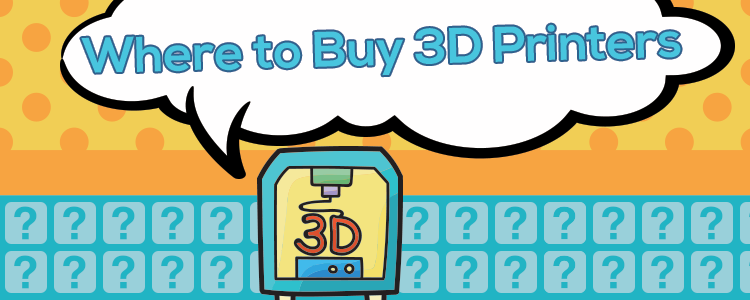
There are plenty of 3D Printers on the market as of this writing. Many more will come to market as times goes on. With this in mind, I have decided to list the 3D Printer manufacturers that have proven themselves over and over again with a passionate fan base and high-quality hardware. Not only that, I can personally vouch for the manufacturers listed below.
Finally, my recommendation is to generally stay away from printers that are highly restricted. Taking this criteria into account and after interacting with thousands of 3D Printer owners, the printers I have listed below are some of the best on the market.
- Lulzbot – Lulzbot is a Colorado based manufacturer of 3D Printers that focuses on creating open hardware (derived from RepRaps) for 3D Printing. While their name might sound strange, Lulzbot is known to deliver very high quality and reliable hardware for a long time. The Lulzbot Mini is arguably one of the best 3D Printers ever made. The higher end TAZ series printers are also very reliable and high quality. It is a rare occasion that a Lulzbot owner complains, and the rare complaints are usually the owners fault, not the printer. If you decide to pick up a Lulzbot printer, make sure you grab the CURA Profiles for your particular Lulzbot printer — those will save you a lot of time. While the Lulzbot Mini is a good beginner printer, the TAZ series is NOT, meaning: it will take some time (and failed prints) to find the most optimal settings. Also, don’t forget about the Lulzbot Forums, it is a must for picking up tips that will make all the difference in print quality. Finally, Lulzbot customer service and user base is all around awesome!
- FlashForge – FlashForge is a Chinese manufacturer of 3D Printers. The most well-known printer from printer from FlashForge is arguably the Dual Extruder FlashForge Creator Pro – which is a Makerbot clone (uses .x3g file format instead of .gcode) that runs like a champ. Based on anecdotal and personal experience, I can tell you that the Creator Pro is an excellent 3D Printer that’s very reliable and easy to repair.
- Printrbot – First of all, just wanted to mention that Printrbot’s customer service is exceptional. Second, their 3D Printers are excellent as well. The Printrbot Simple Metal is arguably one of the best entry level 3D Printers ever produced. It’s a tiny workhorse that produces high-quality prints without any problems. Bottom line, you cannot go wrong with Printrbot.
- Ultimaker – Ultimaker printers are known to produce incredibly smooth and quick prints and in general are very high quality 3D Printers. Out of all of their printers, the Ultimaker 2 might be their best printer. Support & Customer service is also quite solid. Be sure to spend some time calibrating your printer once you get it.
- Wanhao – Wanhao i3 is an excellent entry level printer. It’s a workhorse right out of the box. Check out this quick review for a visual overview. The other bonus is that there’s a huge community around the Wanhao which makes it super simple to make mods. If you are brand new to 3D Printing, the Wanhao i3 makes an excellent first 3D Printer that just works right out of the box. Modifications and repairs are also fairly easy.
- Prusa i3 – One of the few printers that’s CE certified and has excellent build quality. It’s so good that it was featured on the cover of Make Magazine and the 3D Printing community absolutely LOVE this printer. One of the best open source printers ever made.
Tips:
- Aniwaa – Aniwaa is a new comparison website that will help you save a lot of time by narrowing down 3D Printers within specific criteria. Since it’s launch, the database of 3D Printers and search filters have improved dramatically.
- 40 Affordable Printers under $500 – This is a pretty good list of affordable DIY Printer kits that are under $500. Check it out.
- 3D Hubs Printer Guide – You should also take a look at the 3D Hubs Printer Guide — it’s a very comprehensive guide for choosing a 3D Printer. As expected, you will see some overlap.
If you disagree or would like to share a comment or suggestion, please let us know so we could update this section.
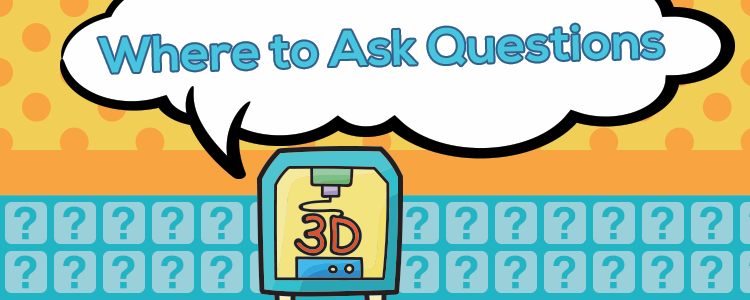
- Lulzbot Forums – (Members: ~2800) If you own any Lulzbot 3D Printers, this is the best place to be. Forum is easy to navigate and it’s filled with LulzBot printer owners and staff. The Lulzbot team is a dedicated and caring bunch of folks that goes the extra mile, and this forum is no different.
- Rep Rap Forums – The original Rep Rap (stands for self Replicating rapid prototyper) forums. These forums are frequented by super geeky early adopters who spend an inordinate amount of time tinkering and building their own 3D Printers. These forums are full of 3D Printing wisdom. Highly recommended, especially if you are a self-tinkering geek.
- Shapeways Forums – If you are interested in hiring a designer to model a 3D design, connecting with the 3D design community or need help with prototyping designs with various materials – this is the place to go. The community here is highly knowledgeable about using 3D Printing technology for prototyping and designing/modeling custom objects. Shapeways is a great place for hiring designers for contracting 3D Design work, so if you have any questions prior to hiring a designer, the forums are an excellent place to be.
- r/3DPrinting – (Members: ~50,000). One of the biggest 3D Printing related communities. Most users in this subreddit are in the geeky, early adopter crowd, meaning: they are full of knowledge, insight and passion. The passion can have backlashing effects though. If you hang out here long enough, you are soon going to run into fervent opinions, discussion and brand bashing – which is not a bad thing in itself, but beware. Finally, your first step should be to use the search function.
- 3DPrintBoard.com – (Members: ~15,000). Fairly active forum dedicated to 3D Printing. It’s a classic forum that is filled with all the subtopics related to 3D Printing one can imagine. 3DPrintBoard was acquired by MecklerMedia, largely due to its popularity/activity level and future growth potential.
- 3DPrintingForum.org – (Members: ~6000). 3DPrintingForum is a smaller forum with decent amount of activity. This forum is largely comprised of those who are brand new to 3D Printing, so it’s certainly newbie friendly. Might not be the best place if you have been 3D Printing for a while though.
- SoliForums – (Members: ~13500). This forum is a super helpful community. While the forum is not officially affiliated with Solidoodle, there’s considerable help and a wealth of knowledge specific for Solidoodle owners. Many users in the 3D printing community consider Soliforums to be an incredibly helpful and friendly place. Definitely a recommended resource!
- 3Dhubs Forums – Another active forum where you can ask an incredibly knowledgeable audience about virtually anything 3D Printing related. The only downside is the hard to navigate, pseudo-reddit style user interface.
- 3DPrintForums – (Members: ~6300). Not a huge forum per se, but the activity level is high enough for it to be a worthwhile resource for anyone interested in asking questions or connecting with 3D printing enthusiasts.
Out of all of those options, the best 3D Printing communities are: 3DPrintBoard, /r/3DPrinting, and Shapeways Forums.
If you disagree or would like to share a comment or suggestion, please let us know so we could update this section.
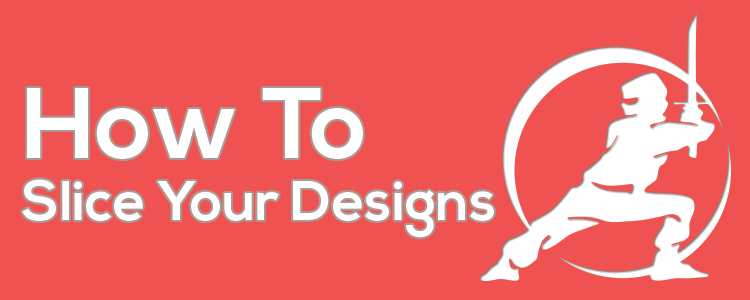
- Simplify3D – Arguably the best slicer that is currently available. The support structures generated by Simplify3D are definitely superior to any other software available. I would argue that the support structure’s of Simplify3D is probably its biggest strength. So, if you are in need of supports for complex/delicate designs, getting Simplify3D is a great idea. Overall, this is an excellent piece of software that is guaranteed to improve your print quality. Is it worth the expensive price tag? Definitely.
- CURA – Popular open source slicer. I would say one of the biggest advantages to using CURA is that it uses slightly less material (than Slic3r) to achieve similar print quality. Also, CURA might be better at support generation when using it’s “lines” option. All in all, it might take some trial and error to figure out the best settings, but CURA is definitely a proven (and robust) slicer. Also, if you look at development contribution(s), it seems like CURA is faring much better than it’s Slic3r counterpart. As far as a plug and play, free option, CURA is a great choice for beginners. (Side note: CURA is available on AstroPrint)
- Slic3r – Next to CURA, Slic3r is the other well known open source slicer used by most. Slic3r is known for producing solid bridges and the signature honeycomb infill. One thing users fail to realize is that Slic3r and CURA at it’s core contains the same features. Those features are usually just expressed differently. As an example, CURA’s perimeter thickness is equivalent to Slic3r’s ‘number of perimeters’ setting. In any case, Slic3r is still a good open source alternative. Expect a lot more experimentation as Slic3r is a lot less “plug and play” than CURA. (Side note: Slic3r is available on AstroPrint)
- CraftWare – This is a free slicer with a nice, clean, intuitive interface. One of the strongest suits of CraftWare is it’s interface and it’s visualization of G-code. The prints produced by CraftWare is generally not as good as Cura or Slic3r, but it is definitely not a bad slicer. A major downside to CraftWare is that it only runs on Windows and it’s lack of dual extruder support.
- KISSlicer – KISSlicer is considered to be a really good slicer, although, given it’s limited amount of software updates, I would use it with caution. While KISSlicer produces great prints, it’s learning curve is a bit steep if you are a complete beginner. Not only that, the default settings are fairly unreasonable and the only way to find the best settings is to build the configuration from scratch. Great slicer, but as I said earlier, don’t expect further developmental updates.
Out of all of those options, the best slicers are Simplify3D and CURA.
If you disagree or would like to share a comment or suggestion, please let us know so we could update this section.
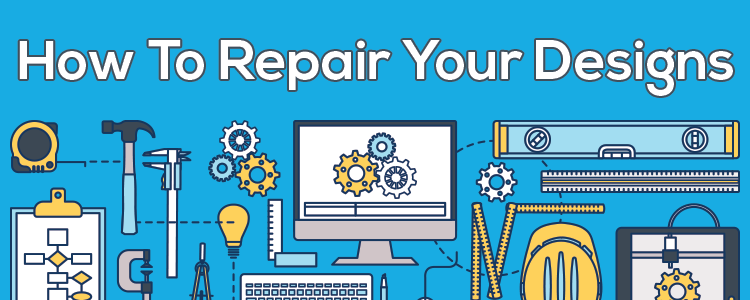
- NetFabb – In addition to a cross platform application, Net Fabb (now owned by Autodesk) has a cloud based 3D Model repair service that will repair STL, OBJ, 3MF or VRML files automatically. It’s a free (and powerful) service that has automated the fixing of common errors in 3D models such as holes, face normals, self intersections etc. This is your first stop in repairing your design files. Very effective tool. Highly recommended. Side note: Net Fabb also has a shareware desktop application if you are willing to shell out some cash.
- MeshMixer – The biggest strength for Autodesk’s Meshmixer is it’s ability in healing meshes with holes. Also, the fact that it is free of charge makes it a must have tool for 3D file repair. The only downside is that there’s a bit of a learning curve if you are a newbie.
- Blender – Blender is arguably the most sophisticated and powerful program for any 3D Design manipulation. It contains a built in 3D Printing tool set that will help you highlight any problems your mesh may have for 3D Printing – among tons of other features. The major downside to Blender is its esoteric user interface and it’s steep learning curve for newbies. If you plan on working with CAD for 3D Printing for a while, it would be in your best interest to learn Blender.
- Tinkercad – While the functionality is fairly basic, Tinkercad allows you to import and edit STL’s for minor modifications. It is also free and web based. TinkerCad is essentially the Microsoft Paint of 3D design software: it’s a quick and dirty solution for doing quick touch ups without having to install software. Tinkercad is also an excellent entry level CAD program for newbies and children.
- Simplify3D – Hard to compete with Simplify3D as the quality of prints you can obtain is incredible. The only downside is that it is premium software. If you 3D Print quite a bit, Simplify3D is definitely a great investment.
Tip: If you want to convert between various 3D File formats, you can try this nifty tool.
Out of all those options, the best (free) solutions for File Repair would be NetFabb and MeshMixer. Simplify3D would be the default paid option.
If you disagree or would like to share a comment or suggestion, please let us know so we could update this section.
Tip: Also, be sure to check out Simplify3D’s Print Quality Troubleshooting Guide as well — it is a vital reference for years to come.
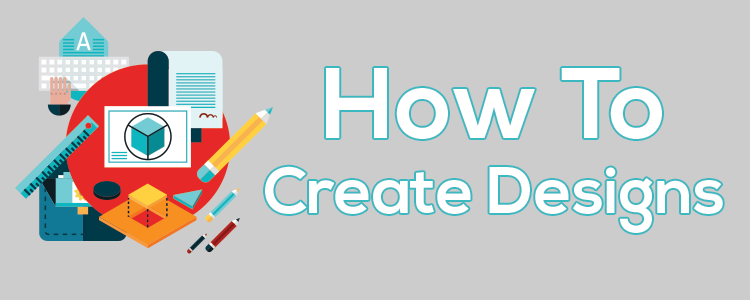
If you are brand new to CAD design, keep the following in mind: CAD design can be challenging and there WILL be a learning curve to it. Good news is that there are plenty of free tutorials online that will make the learning curve a lot more palatable. Once you get decent at CAD however, you will never look at the world the same way. It’s almost a superpower that will enable you to create literally anything – your imagination is your limit. Not to mention, you won’t have to spend a single dollar on manufacturing!
Here are some recommendations for starting your CAD journey….
- Blender – While Blender is a very powerful (and free) piece of software, and it’s interface is a bit esoteric and will take some time to get used to. The capabilities of Blender is unparalleled though. It can do pretty much anything. If you are patient enough to climb through it’s steep learning curve, you might be able to join the ranks only frequented by 3D Printing Gods. Highly recommended – especially if you are planning on doing 3D Modeling for a long time. The biggest strength for software like Blender is its free form modeling ability, which is much better for animations and pretty renderings than designing 3D Printable stuff. Finally, if you plan on using Blender, a good forum is a must.
- TinkerCad – In addition to designing your own 3D Models, TinkerCad also allows you to import and edit STL files. It is also completely free of charge. When I first got into 3D Printing, I used TinkerCad to design a phone case in about 30 minutes – which means, it is very beginner friendly and easy to learn. TinkerCAD also allows you to easily change units, import/edit/export STL files and input Cartesian input on the ruler for precise measurements. If you are brand new to CAD, Tinker Cad is an excellent choice.
- FreeCAD – FreeCAD is a open source, multi-platform, and full fletched parametric 3D Modeling software that will give you a lot of flexibility and capabilities in designing 3D Models. There’s a lot of built in testing/repairing tools (solid tests, self intersection tests, non-two manifold tests), a built in scripting framework (for programming custom modules) and most other standard features found in CAD Software. I would argue that FreeCAD is the closest open source alternative to Solidworks. It’s certainly a very robust piece of software designed for geeks with a clean interface. Try it out.
- OnShape – OnShape is a cloud based CAD platform designed by former members of the Solidworks team – which explains why it is well designed and easy to use (especially if you have used Solidworks before). OnShape is a much more advanced and powerful than TinkerCAD, so much so that it is incomparable. OnShape is definitely an excellent solution.
- Rhino3D – Rhino is an excellent shareware CAD program (with a 90 day trial) that’s available in PC and OS X. The free form 3D modeling tools available for designing, repairing prototypes, and models are incredible. Definitely one of the best out in the market. Try out the limited functionality trial first.
- Regard3D – Ever heard of photogrammetry? It’s the idea of taking pictures of an object from multiple angles and constructing a 3D Model out of it. It’s a pretty neat process. Regard3D is a fantastic open source solution that is very capable at photogrammetry.
- AutoDesk 123D – Free 3d modeling/design software by AutoDesk with a premium option. Has web based and client versions. 123d is best for designing simple stuff. While 123d is a decent CAD program, I have personally experienced a lot of lags and crashing while using it for complex designs. If you are planning on working with complex designs, I would advise against using 123d. If you are competent with AutoDesk 123D however, you would be very well primed to use Fusion 360.
- SketchUp – Sketch up is a solid piece of software minus it’s interface as it has a bit of a learning curve. The major downside to SketchUp is manifolds and it’s inability to make solids natively. Sketchup is essentially useless without adding in plugins. A must have plugin is the Solid Inspector plugin, which will help you in identifying problematic areas of your designs fairly accurately. I also recommend getting the [Cleaner Plugin], which is excellent for cleaning up stray faces, and random lines. Finally, you would need the STL export plugin in order to export your designs in a 3D Printable format. Chris from The New Hobbyist also has an excellent list of recommended plugins for SketchUp. If you are planning on selling your STL files, keep in mind that the SketchUp license may not allow any commercial use.
- 3DF Zephyr – Need to construct a 3D Model from a photograph? This might be one of the best options for constructing 3D Models out of a picture or photograph. (it’s called photogrammetry). While there are many versions of the software, they all cost a bit of cash. At the time of this writing, there appears to be a free web based version (with limited functionality) as well. If you are looking for a free alternative to convert photographs into a 3D Model, try out AutoDesk’s 123d Catch.
- Fusion 360 – Fusion 360 does interface directly with CURA if CURA is open simultaneously with Fusion 360. You can also export a STL for a specific slicing engine of your choice. Generating STL’s for slicing is a bit frustrating though. Upon importing a few sample STL’s, I got a useless mesh and their cloud based file saving took a lot longer than expected. If you choose to go with Fusion 360, my recommendation is to start with Fusion 360’s built in tutorials first. They are actually VERY helpful. The Fusion360 YouTube channel is also quite useful.
- DesignSpark Mechanical – This is a Free CAD tool that’s designed to make CAD simple. This software seems like it’s aimed at engineering types that spend a lot of time modeling prototypes. While DesignSpark Mechanical is not the most popular CAD software, I haven’t heard anything negative about it either. The only downside I can think of is that it is NOT cross platform and runs only on Windows.
- OpenSCAD – If you are new to OpenSCAD, your first reaction will be “This is weird” — which is a perfectly acceptable first impression of OpenSCAD. OpenSCAD is ideal for constructing complex designs using equations, and algorithms. Programmers/engineers will definitely feel at home with OpenSCAD. This software is all about open source syntax based modeling, which means, you describe your model in a computer language, then the computer renders it. Powerful software. Recommended.
- Sculptris – Sculptris is an interesting (and Free) piece of software and cannot be compared to all the other CAD software I have mentioned thus far. The biggest strength of Sculptris is in modeling creative, organic models. By ‘organic’ I am referring to animals, humans etc. It is very similar to ZBrush. Sculptris is essentially digital clay sculpting at it’s best. Recommended.
- Meshmixer – Lauded as the “Swiss Army Knife” for 3D Meshes, AutoDesks’s free MeshMixer is an excellent choice, especially for manually adding supports. As the name suggests, MeshMixer allows you to drag and drop and mix meshes among a ton of other features. MeshMixer is especially great for editing and doing quick touch ups prior to printing. The fact that MeshMixer is also cross platform is a bonus.
- Autodesk Inventor – AutoDesk Inventor is a (expensive) piece of software that’s very prevalent among mechanical engineers and CAD technicians, so it is definitely a powerful piece of software that will get the job done. Inventor also does well with highly complex designs. Inventor also natively supports STL’s, but is most often used for subtractive manufacturing methods. While students can get a free license, Inventor is quite pricey.
Out of all those options, the best solutions for CAD Design would be OnShape, FreeCAD, and Blender.
If you disagree or would like to share a comment or suggestion, please let us know so we could update this section.
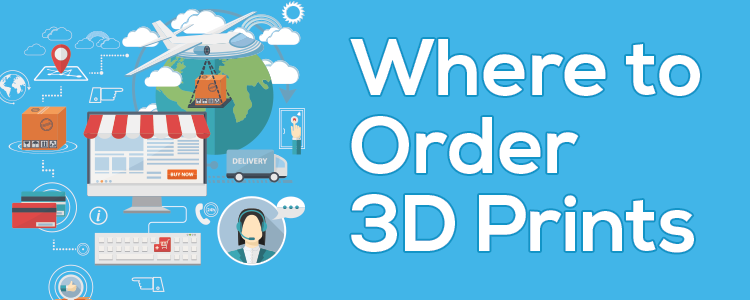
Perhaps you want someone else to 3D Print something and ship it to you. Perhaps you want to print your existing design with a different material and have it printed at a much higher resolution. When it comes to having a third party 3D Print something for you, my biggest advice is the following: take your time in comparing the price among many different vendors for your particular project. I have seen huge variations in pricing (sometimes, almost twice as much!) among multiple vendors for the same exact print and material. The list below is a great starting point though.
- Shapeways – Shapeways mostly uses Slective Laser Sintering (SLS) printers, so the quality is generally pretty good. One thing to keep in mind is that most design you find on Thingiverse are NOT designed to be printed on a SLS printer – those designed are designed to be printed on cheap, consumer, FDM 3D printers. Why am I telling you this? Because if you use one of those designs and send them to shapeways, it might cost extra because the designs are not optimized for SLS printers.
- Ponoko – Ponoko is a service that offers laser cutting, 3D Printing and metal machining services. Basically, you send them a design and they will professionally reproduce that design in pretty much any material. One of the biggest benefits is being able to order designs at low volume. If you are not well versed in CAD, Ponoko also has in house designers that will gladly help you bring your design into life. I haven’t heard anything bad about these guys either. Also, you have the ability to buy and sell custom designs on Ponoko’s Showroom.
- 3D Hubs – 3D Hubs is one of the most well known places to order prints. Basically, anyone with a 3D Printer and 3D Printing expertise can setup a “hub” and help you 3D Print (and ship) your design. You can filter by virtually any type of material and there’s even an option to print with industrial grade 3D Printers (called 3D Hubs HD). You should also be aware of the limitations of 3D Printing when contacting a local hub though. For example, don’t expect a design to come out perfect if you just downloaded it from Thingiverse. In any case, 3D Hubs is an excellent place to order custom prints.
- i.materialise – Another well known place for ordering custom designs. Again, you have the option of choosing from many different types of material for your design. Other than delayed shipping issues, I haven’t heard of any problems with i.materialise. Like I said earlier, your best bet is to compare prices for your combination of material type + shipping among many providers as it is normal for prices to vary by a big margin among many different vendors.
- Fictiv – Fictiv delivers 3D Printer parts in 24 hours max. It is aimed mostly towards engineers and designers interested in creating low cost prototypes, but anyone can use the service. The only downside is that currently you must be in the West Coast (United States) in order to receive your order within 24 hours.
- MakeXYZ – MakeXYZ is similar to 3D Hubs. You upload your designand MakeXYZ will instantly quote you a price. The biggest downside for MakeXYZ is their instant price quoting algorithm. I have found that it is hit or miss. For example, it won’t take into account things like infill etc.. If you plan on using MakeXYZ, it is best to contact MakeXYZ/The Printer directly after receiving a quote — otherwise you will likely overpay.
- Sculpteo – Sculpteo is also a fairly well known source for ordering custom designs in a wide range of materials. I highly recommend that you order their Material Samples kit before you order anything though. Doing so will give you an accurate (tacticle) idea of how your print will turn out.
Out of all those options, the best solutions will highly depend on your design and material type. The best thing to do would be to get quotes from all of the providers above. There is no single best provider in this arena.
If you disagree or would like to share a comment or suggestion, please let us know so we could update this section.
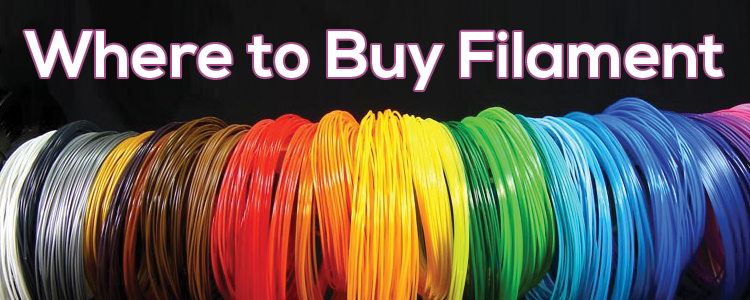
- ColorFabb – One of the most well known filament makers around. ColorFabb is known for producing some really cool specialty filament for 3D Printing. I have personally used some of their filament and have interacted with the ColorFabb team many times. The quality of their filament and customer service is excellent. Can’t go wrong here.
- IC3D – I am adding IC3D to the list out of popular demand. I haven’t heard anything negative about the product or the company and since the first version of this cheat sheet, many of you have demanded that I add IC3D to the list.
- NinjaFlex – NinjaFlex is arguably the most popular flexible filament provider. I have personally tried all of their filaments (My favorite is SemiFlex) and they are quite fun to print with. Haven’t heard of any complaints about NinjaFlex as a filament provider though.
- HatchBox3D – Another great filament provider. The biggest benefit for ordering HatchBox filament is that you can order them through Amazon, which makes it very convenient to buy quality filament.
- ProtoPasta – Proto Pasta is an interesting filament maker that is responsible for a lot of cool specialy filament. They make: Composite Metal PLA, Aromatic Coffee PLA and Carbon Fiber PLA. I have personally printed with their Coffee PLA filament with great results. Never heard of any complaints or product quality issues.
- PrintedSolid – PrintedSolid is a distributor for various types of filament (Colorfabb, Taulman, Ninja Flex, ProtoPasta) and they are quite excellent in terms of customer service and timely deliveries. Great place to shop for filament.
- ORD Solutions – Another great Filament provider that also offers free shipping to Canadian customers.
- Atomic Filament – Great provider. The producer sometimes hangs out at the Rep Rap IRC Channel and I have never heard of any complaints about Atomic Filament. The quality, colors, and general product quality is excellent.
- Lulzbot – Lulzbot also resells filament from their various warehouses. Considering Lulzbot has excellent customer service, buying filament from should be a no brainer.
- eSun Filaments – eSun is a Chinese manufacturer that I have used many many times. Never had a bad experience and their filament is pretty cheap.
Out of all those options, the best places to buy standard PLA/ABS filament would be from Hatchbox3D and PrintedSolid. For specialty filament, ColorFabb and ProtoPasta.
If you disagree or would like to share a comment or suggestion, please let us know so we could update this section.
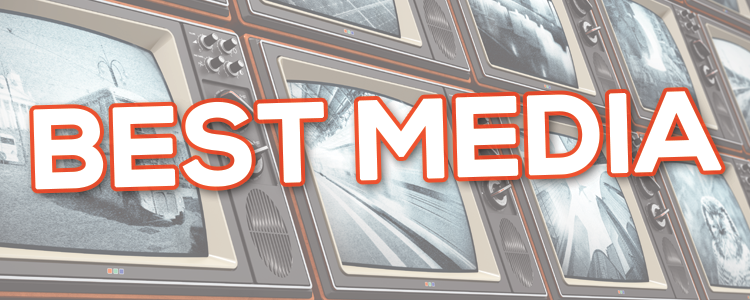
While there is a big shortage of 3D Printing related media, there are still a couple of high quality producers. My two main criteria for this section is dependent on how focused the creator is about 3D Printing, the quality of their content and the response from their audience. I am including YouTube channels, podcasts and a few books. If I missed anything, please let me know.
- The 3D Printing Nerd – Joel Telling is the head nerd behind this YouTube channel. He has been quite consistent over the past year in releasing high quality 3D Printing related videos and has a fun and nerdy personality. Joel’s videos are fun to watch and if you are new to 3D Printing, subscribing to The 3D Printing Nerd will cut your learning curve significantly. Highly recommended.
- Chuck Hellebuyck – Chuck’s channel name is a bit confusing but he produces useful and entertaining videos involving 3D Printing. What I like about Chuck’s approach is that, instead of just 3D Printing stuff, he incorporates other tools along with 3D printing to produce a functional/useful final product. It’s a mix of 3D Printing + DIY + Creativity wrapped up in a old school, homely, in the garage feel. Reminds me of an old PBS Show where your wise old uncle is passing down geek wisdom to you.
- Tom Sanladerer – I thought I was fully aware of all of the 3D Printing YouTubers, but a reader informed me about Tom. I am glad I discovered Tom’s channel! The content is definitely high quality and it is painfully obvious that Tom is very knowledgeable about 3D Printing. While Tom covers various 3D Printing related topics and does product reviews from time to time, he has a central focus in talking about RepRap style printers and 3D Printer kits. Highly recommended.
- Makers Muse – Angus runs the Makers Muse YouTube channel and he is definitely knowledgeable about 3D Printing. The biggest strength of Angus is his clear communication style and lack of fluff. He also interacts well with his fans/community and does Q&A videos responding to any questions. Highly recommended.
- WTFFF?! 3D Printing – This podcast is hosted by the husband and wife duo Tom & Tracy Hazzard. The podcast is generally a casual conversation revolving around anything and everything 3D Printing related. If you want to stay on top of the 3D Printing industry on your drive to work, this is a great place to start. As a bonus, these guys have been very consistent and focused with their content output.
- 3D Printing Today – With the exception of their difficult to read file naming conventions, Andy Cohen & Whitney Potter does an excellent job hosting this podcast. It is one of the oldest and most consistent 3D Printing podcasts in existence. They cover a wide ranging topics in the 3D Printing industry and are always informative.
- Maker Cast – These guys cover passionate DIY makers in the fields of manufacturing, CNC machining, welding, fabricating, 3D Printing, STEM, and robotics. While they may not be hyper focused on 3D Printing, the content is excellent and I especially appreciate their style of showcasing individuals. Highly recommended.
- Fabricated – If you are new (or even experienced) with 3D Printing and would like to get a wide overview of all the possibilities of 3D Printing, this is a great start. Keep in mind that this book is not a technical overview of 3D Printing, rather it is mainly aimed at those who are interested in getting an idea of the possibilities of 3D Printing and how it could apply to their life and/or business.
- Makers: The New Industrial Revolution – This is the first 3D Printing book I’ve read and it is quite good. It was written by Chris Anderson, so that’s not really a surprise. Again, this is not a technical overview of 3D Printing, rather it’s aimed at informing the general reader about the implications of the mass adoption of 3D Printing. Easy and well researched read. Bonus: Watch Chris Anderson’s talk based on the book
Media is inherently subjective, so your best bet would be to sample some of the above and see what satisfies your appetite.
If you disagree or would like to share a comment or suggestion, please let us know so we could update this section.
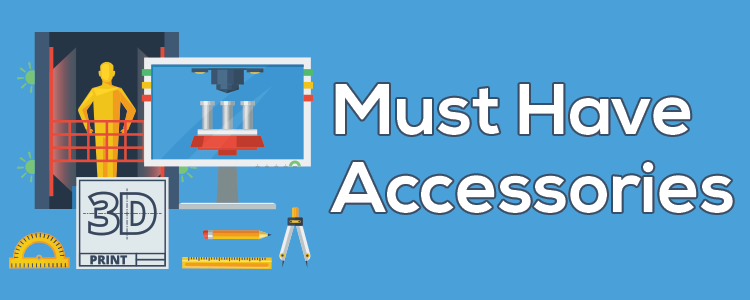
After interacting with many 3D Printer owners and 3D Printing quite a bit myself, I have found that having a well stocked arsenal of accessories to be a necessity. There are many tools and gadgets you could buy, but in my opinion, the list below is the most useful.
Adhesion is always a challenge.
The following is a great list of potential solutions for any adhesion problems you might have.
You should also probably get E3D Hardened Nozzles if you are printing with specialty filament. Specialty filaments are generally very abrasive on your nozzle and not having a hardened nozzle will wear it out quickly. Glow in the Dark filament, for example, contains Strontium Aluminate — which is an abrasive compound that will wear your regular old nozzle out.
You might also find Toybuilder’s Filament Monitor to be useful in detecting unexpected filament breaks while printing.
Having a Butane Torch can also be useful for smoothing your PLA prints. Be super careful though!
You also need a decent spatula for removing prints and a good glue product to stick printed parts together.
If you disagree or would like to share a comment or suggestion, please let us know so we could update this section.
Well, there you have it!
That’s the end of The Ultimate 3D Printing Cheat Sheet.
This is not going to be a static document, rather, based on your feedback, I will be updating it appropriately in future iterations.
Thanks for reading!
— Dilanka
P.S: Thanks to the almighty Joshua White (our Chief Design Officer) for providing beautiful, kick ass header graphics 😉

